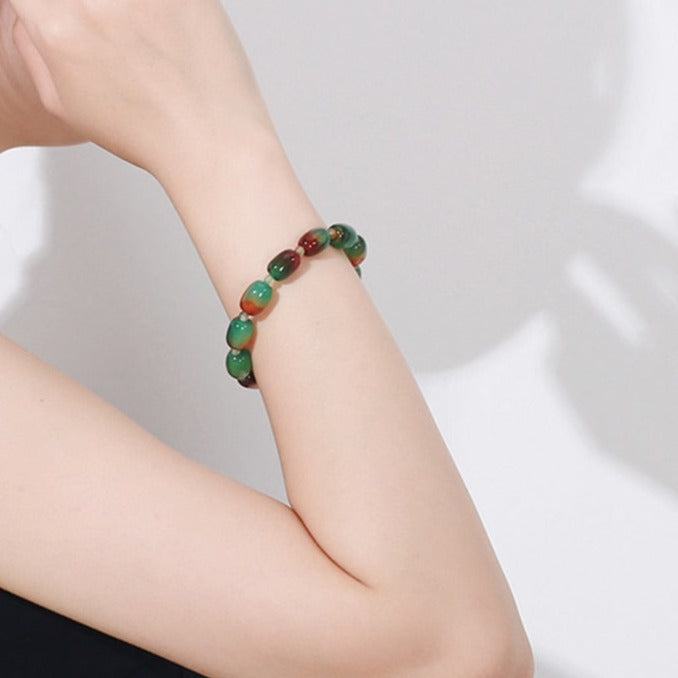Mother of pearl is a mineral biosynthesized by some varieties of molluscs to coat the inside of their shells. Mother of pearl is essentially composed of microcrystals of aragonite, which alone represents about 85% of the material that composes this material. The rest of the composition is split between a protein called conchiolin (13%), which serves as a small cement to bind the aragonite crystals, and water, which accounts for only 3% of the mother-of-pearl composition.
The color of the nacre is not actually due to a particular pigment, but rather to the overlapping of layers of materials whose refractive index varies from one layer to another. Therefore, the color is determined by the position of the observer and the angle of incidence of light on the surface of the nacre. Some varieties of nacre may have yellow or purple reflections, this is mainly due to the presence of certain pigments in conchioline proteins. Mother of pearl has a density of 2.95, its hardness is approximately 3.5 to 4 on the Mohs scale.
The most precious and precious mother of pearl, also called "free mother of pearl", is found in the seas and territorial waters of Australia, the Philippines, Indonesia, on the coasts of some African countries such as Djibouti and Madagascar, and on the western coasts of India and the Arabian Sea.
Etymologically, the term mother of pearl derives from the Arabic word "naqqarah". This material has been and still is the subject of a particular craze for its beauty and refinement. Several great civilizations have known and used mother of pearl for various purposes, including the making of tools, vases, jewelry and even dental implants, as well as the Maya.
From China to ancient Rome, through Persia, Mesopotamia, Egypt, Greece, the great cultures of the ancient world used and appreciated mother-of-pearl, which in some cases served as a bargaining chip.
From the Middle Ages onwards, mother of pearl has taken on a religious symbolism among Christians, and has often been associated with the Virgin Mary for its whiteness and purity. Some large shells have also been used as a baptismal font or passed for religious symbols such as the scallop shell which symbolizes the pilgrimage to Compostela.
Nowadays, mother of pearl has several uses. From jewelry, to cabinet making, to the creation of fashion accessories, man has made many wonders of craftsmanship using this noble and unique material, mother of pearl.
Properties of mother of pearl
Mother of pearl is now widely studied in medicine for its potential use in bone regeneration and its possible uses in reconstructive surgery. Lithotherapy also recognizes several virtues to mother of pearl, which would be beneficial to protect and stimulate the entire digestive system. It would also be indicated for fighting flu, fevers, eye diseases and calcium deficiencies.
On an emotional and spiritual level, mother of pearl acts as a calming element. It would dispel mood swings, anger, anguish and all the excessive emotional states that can affect daily life.
Stone of intuition and mental openness, it would purify the aura and facilitate access to the astral body. Mother of pearl would promote the circulation of energies in the body and help focus the mind to facilitate access to wisdom. It would also be particularly beneficial to the solar plexus chakra and the frontal chakra.
The astrological signs of predilection for mother of pearl are those of Cancer, Virgo, Gemini, Capricorn and Pisces.
To purify the mother of pearl, just immerse it in salted distilled water. To recharge it, the solar or lunar rays should quickly return all its power and benefits.










